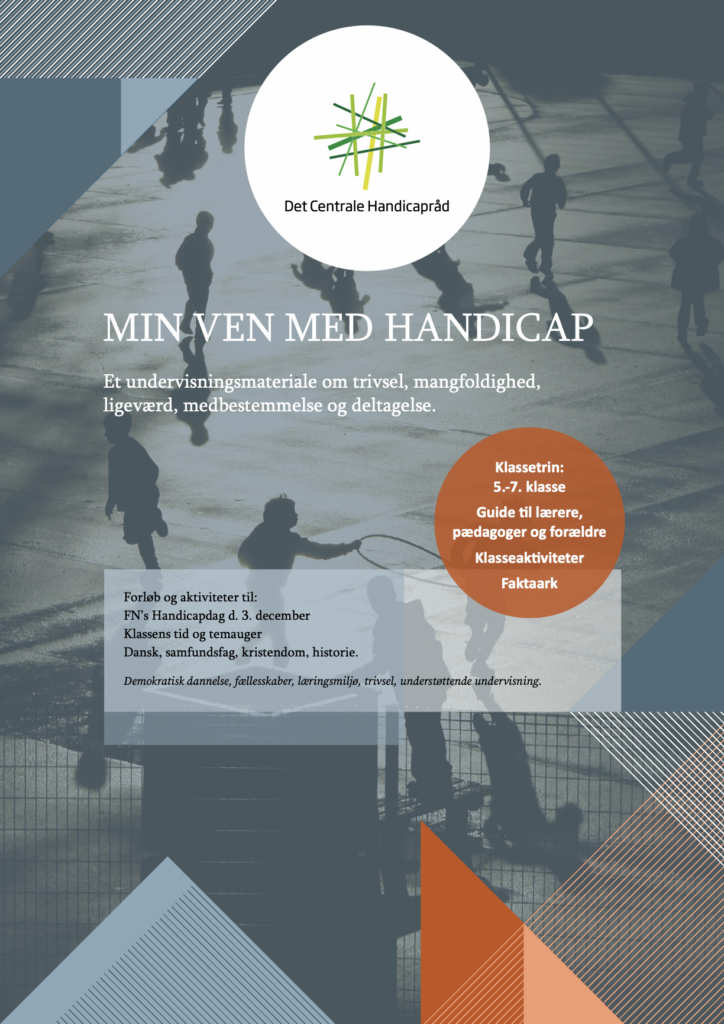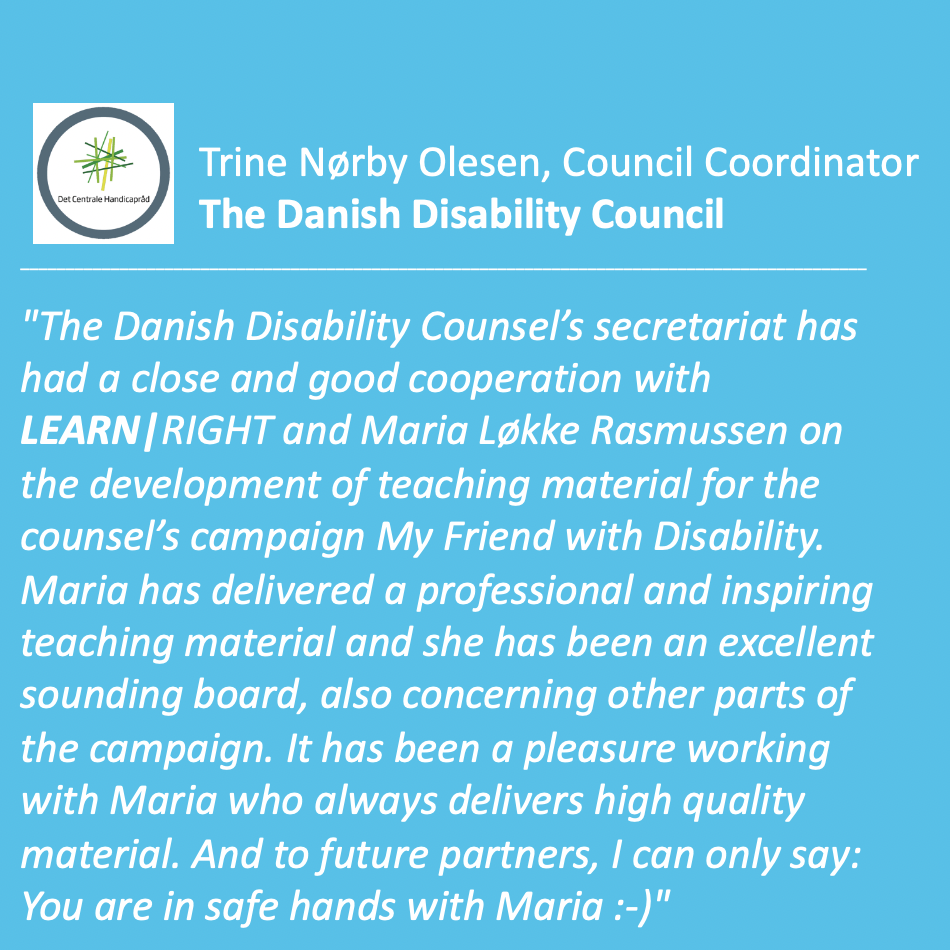
Everyone needs a friend to be happy and thrive, to grow up and develop, and to be confident and ready to learn new things.
This applies to all children – both children with and without disabilities.
Today, many children with disabilities are integrated into ordinary school classes, but not all are able to succeed. A study from VIVE (made in 2018) shows that children with disabilities are substantially less successful academically and socially than their classmates.
The campaign “My Friend with Disability” helps to change this by breaking down prejudices, ensuring involvement and well-being in school and creating a breeding ground for friendships between children with and without disabilities between 5th and 7th grade. Behind the campaign is the Central Disability Council (DCH), which is an independent council under the Ministry of Social Affairs and Senior Citizens, and the campaign is a follow up to an existing campaign aimed at those between 2nd and 4th grade.
LEARN|RIGHT has been part of the campaigns development process from start to finish, in collaboration with DCH and Kompas Kommunikation (who has been responsible for the development of the campaign films showing three friendships between children with and without disabilities). A letter about the campaign and the teaching material has been sent to all primary schools in Denmark and was launched on social media.
LEARN|RIGHT developed a teaching manual that is based on friendships between children with and without disabilities, and the campaigns three films, which works with the themes of diversity & equality, participation & co-determination for all children. The goal of the manual is to put children with disabilities and their friendships on the agenda in school, class and at home and at the same time address the universal needs that all children deserve to develop and in turn, thrive. This makes the material relevant and useful for all children, classes, schools and homes. Another goal is to make the manual relevant not only to the FN’s Disability Day on December 3rd, but also before and after, by creating a material that encourages putting together longer courses over several weeks and across disciplines.
The manual consists of:
- A guide for teachers and educators to prepare for the themes of the films, take the temperature in the classroom as well as tips to ensure a supportive learning environment and teaching methods. This should create reflection among teachers and educators about the classroom environment and the given themes and bring about thoughts on one’s own practices and opportunities to influence the learning environment.
- A conversation guide for parents, to talk to their children about the films and their challenges. The conversation guide can be used by the parents’ own initiative, if they themselves encounter the campaign on social media or as part of a teacher-directed course in the class.
- Three fact sheets: “What is Disability”, “Disability and Inclusion” and “Human Rights” for principals, teachers and educators, as well as parents.
- 12+ class activities based on interactive learning methods and participant involvement, with many different types of activities that allow students to try, experience and discover, instead of just gaining knowledge on the topic. The manual is structured in a way that it gives teachers and educators a good overview to put together shorter or longer courses of several different activities and the manual also includes a number of suggestions for the composition of a course.

